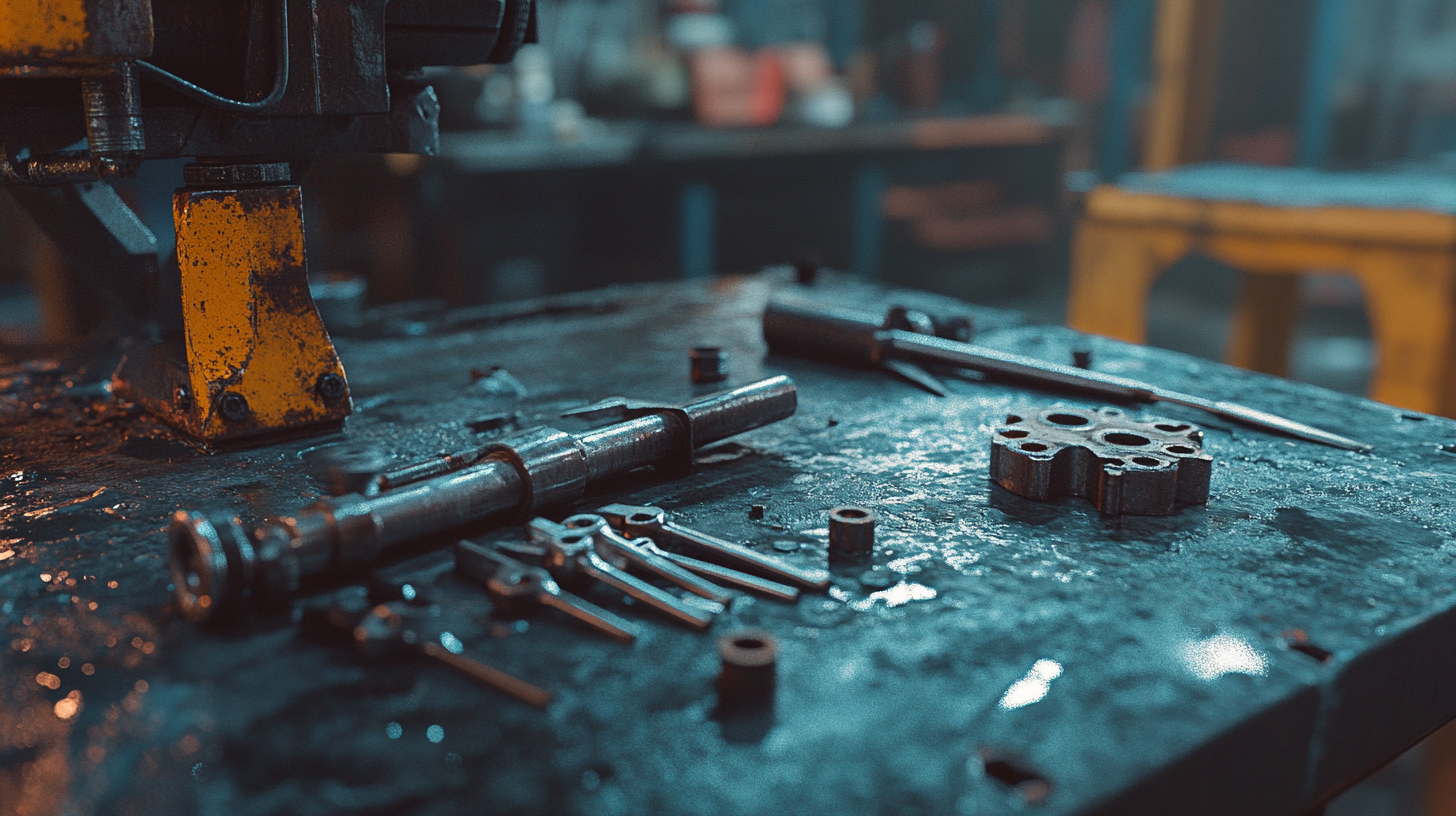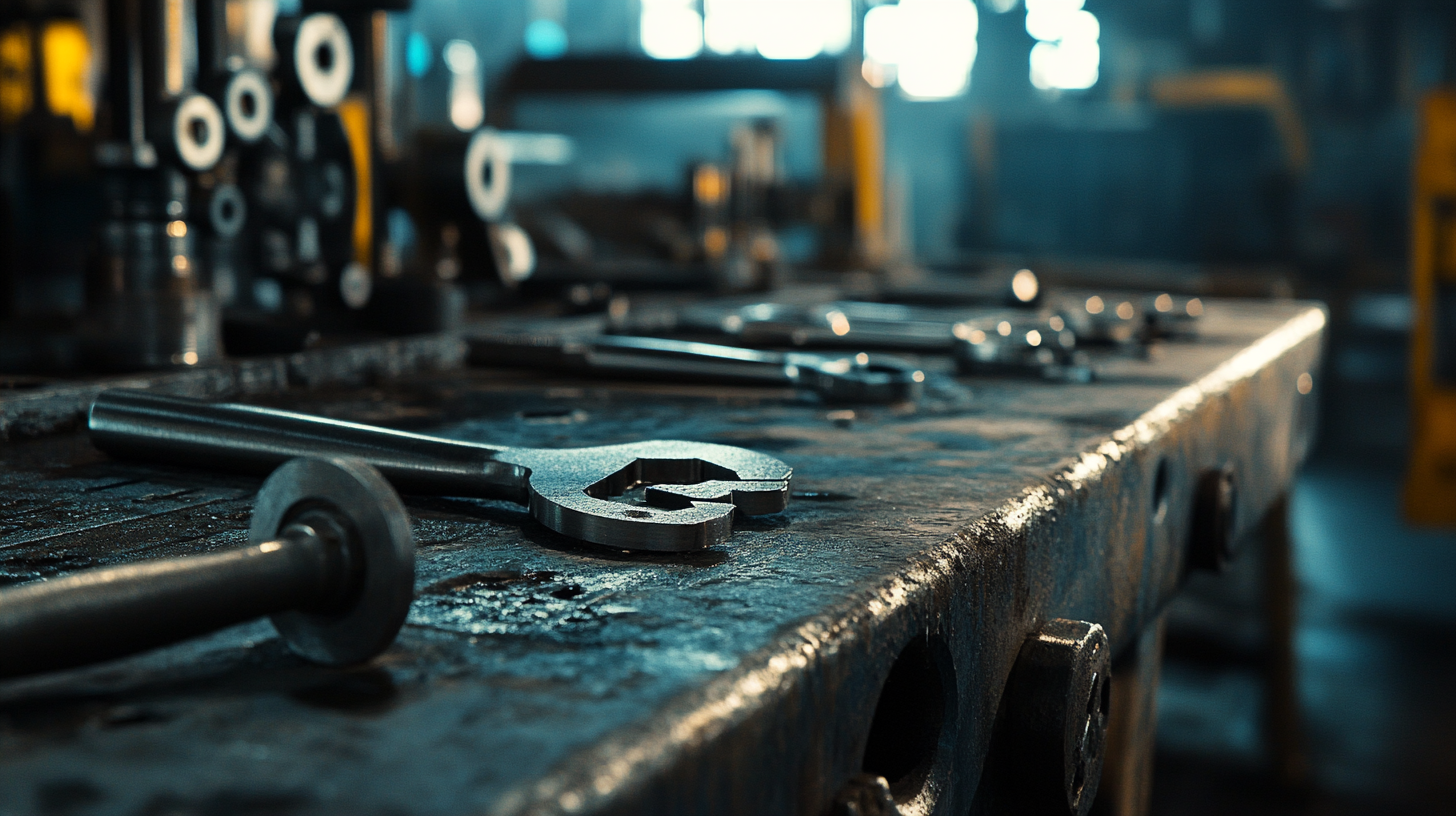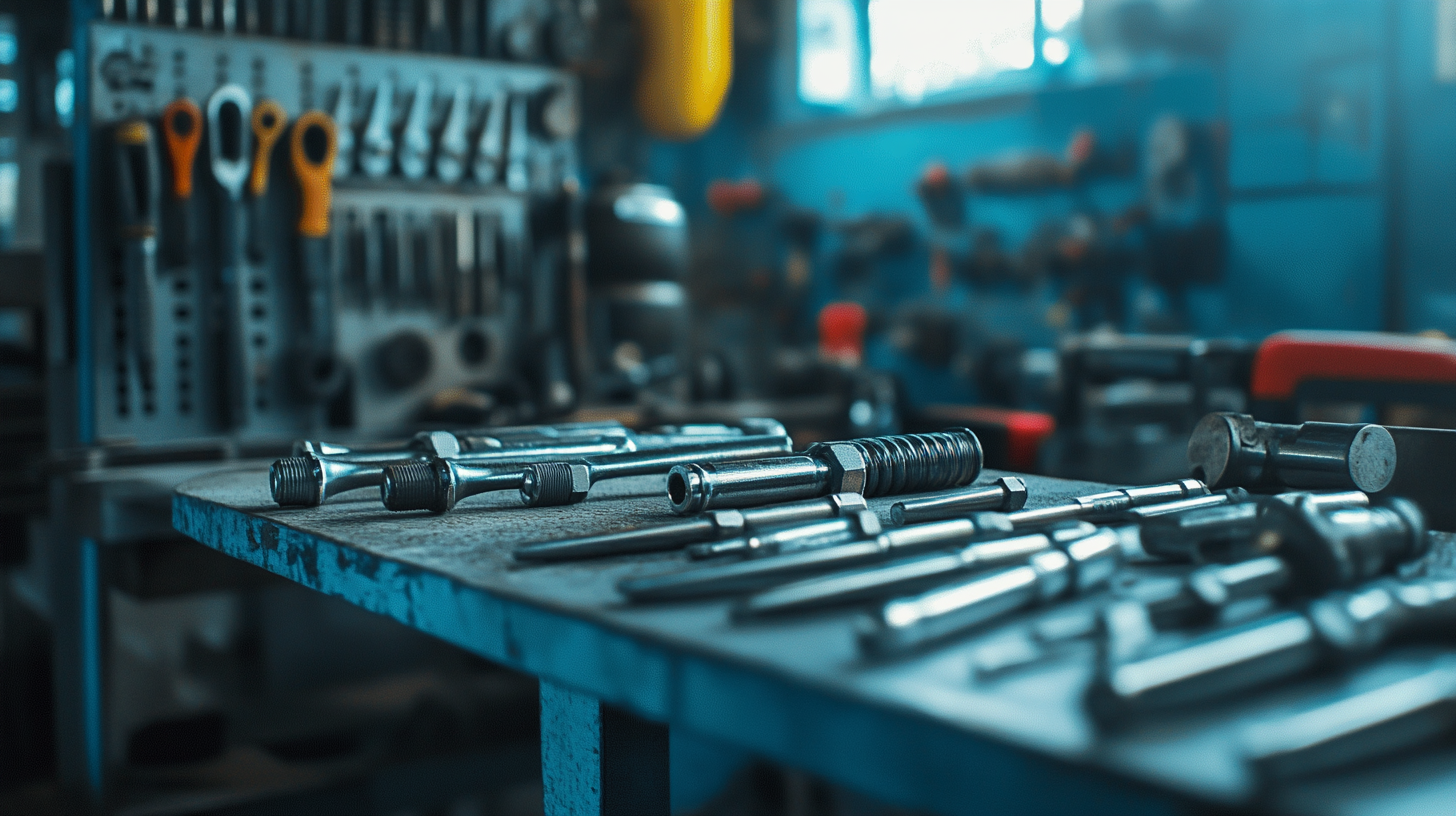Blog
Unlocking Efficiency: Top Everlasting Heavy Duty Tools for Industrial Excellence
In the fast-paced landscape of industrial operations, efficiency is not just an advantage; it is a necessity. According to a recent report by the National Association of Manufacturers, over 75% of manufacturers believe that optimizing tool usage can significantly reduce production downtime. The reliance on Heavy Duty Tools is paramount in achieving this goal, as they are specifically designed to endure rigorous tasks while ensuring high performance and reliability. With the right tools, industries can streamline processes, enhance productivity, and ultimately drive profitability.
Moreover, the Global Heavy Duty Tools Market is projected to reach $25 billion by 2026, growing at a CAGR of 5.4%, as companies increasingly understand the pivotal role that robust tools play in sustaining operational excellence. Whether it's construction, manufacturing, or maintenance, the demand for Heavy Duty Tools continues to rise, highlighting their critical role in supporting the workforce. As industries seek to unlock new levels of efficiency, investing in high-quality, durable tools becomes imperative, paving the way for enhanced industrial performance.

The Impact of Everlasting Heavy Duty Tools on Industrial Productivity Metrics
In the ever-evolving landscape of industrial productivity, the choice of tools can significantly impact operational efficiency. Everlasting heavy-duty tools, designed for maximum durability and performance, are proving to be catalysts for productivity metrics across various sectors. According to a recent report by the National Tooling and Machining Association, businesses that integrate heavy-duty tools into their manufacturing processes see a productivity increase of nearly 20%, directly attributable to reduced downtime and fewer tool replacements. The durability of these tools not only enhances their lifespan but also ensures consistent performance under strenuous conditions. A study conducted by the Manufacturing Institute highlighted that industries leveraging heavy-duty tools reported a 15% decrease in operational costs, primarily due to lower maintenance and repair expenses. Furthermore, the use of such tools fosters a safer work environment, as they often come equipped with advanced safety features that diminish the likelihood of workplace accidents. Moreover, companies that invest in high-quality, everlasting heavy-duty tools see a positive ripple effect on employee morale and satisfaction. A survey by the Industrial Supply Association found that 78% of workers reported increased job satisfaction when provided with reliable tools that facilitated their tasks. This increase in morale often translates to enhanced output quality, reinforcing the idea that investing in lasting tools can yield substantial returns in both productivity and workforce engagement.

Analyzing the Long-Term Cost Savings of Investing in High-Durability Equipment
Investing in high-durability equipment can significantly impact the long-term cost savings for industrial sectors. According to a report by the American Society of Mechanical Engineers (ASME), industry leaders have convincingly demonstrated that utilizing everlasting heavy-duty tools can reduce maintenance costs by as much as 30%. This reduction is primarily attributed to decreased frequency of repairs and replacements, allowing companies to redirect those resources toward growth and innovation.
Furthermore, a study by the National Association of Manufacturers (NAM) indicates that the initial higher capital investment in durable tools pays off over time; businesses report an average return on investment (ROI) of 200% over a ten-year period. This is particularly crucial in industries where productivity and reliability are key factors for competitive advantage. The long-term performance of quality equipment promotes operational efficiency, ultimately leading to increased output and profitability.
Additionally, with the increasing focus on sustainability, investing in robust tools aligns with environmentally conscious practices. As noted in a report from the Environmental Protection Agency (EPA), durable equipment contributes to waste reduction, as less frequent replacements lead to fewer discarded tools. By prioritizing longevity in their tool selection, companies not only enhance their economic resilience but also support broader environmental goals—a win-win for both the industry and the planet.

Case Studies: Industries That Achieved Excellence with Heavy Duty Tooling
In the ever-evolving landscape of industrial operations, the use of heavy-duty tools has proven to be a game-changer for many sectors. Several case studies highlight how companies have transcended traditional challenges to achieve remarkable efficiency and productivity through the adoption of durable, high-performance tools. For instance, in the manufacturing sector, a leading automotive company implemented heavy-duty machining tools that significantly reduced production time, enabling them to meet rising demand while maintaining quality. The improved tooling allowed for precision that not only enhanced product reliability but also cut down on waste, demonstrating the effectiveness of investing in robust equipment.
Another fascinating example can be found in the construction industry, where a large firm faced constant delays and increased costs due to equipment breakdowns. By integrating advanced heavy-duty tools designed for demanding environments, they experienced a dramatic reduction in downtime. The ability of these tools to withstand harsh conditions and perform consistently translated into faster project completions and higher customer satisfaction. These case studies illustrate that the capabilities of heavy-duty tools extend beyond mere functionality; they are critical in fostering an organizational culture focused on excellence and continuous improvement.
Moreover, in the energy sector, one company adopted heavy-duty pneumatic tools to streamline its maintenance operations. The reliable performance of these tools not only enhanced safety protocols but also shortened the turnaround time for critical repairs. This strategic upgrade facilitated a more proactive approach to maintenance, minimizing disruptions and maximizing operational output. These examples emphasize how investing in heavy-duty tooling can lead to substantial improvements, not just in productivity but also in overall industry competitiveness.

Key Performance Indicators for Selecting Reliable Tools in Manufacturing
When it comes to the manufacturing sector, selecting the right heavy-duty tools is crucial for optimizing efficiency and ensuring quality output. Key Performance Indicators (KPIs) serve as essential metrics for evaluating the reliability of tools in industrial operations. They encompass various factors that reflect a tool's performance, durability, and overall effectiveness in meeting production demands.
One of the primary KPIs to consider is the tool's durability, which directly impacts its longevity and the frequency of replacements needed. Tools that can withstand rigorous use reduce downtime and maintenance costs. Additionally, assessing the ergonomic design of tools enhances worker comfort and productivity, minimizing fatigue during extended use. Analyzing user feedback and performance reviews can provide valuable insight into a tool's practical effectiveness in real-world applications.
Another critical KPI is the tool's versatility, as versatile tools can perform multiple functions, thereby streamlining workflows and reducing the need for numerous specialized tools. This adaptability can lead to significant time savings and increased operational efficiency. Lastly, energy efficiency is becoming increasingly important in the manufacturing landscape; tools that lower energy consumption contribute not only to cost savings but also to sustainability goals. As manufacturers strive for excellence, integrating these key indicators into the selection process will ensure that the chosen tools meet both current and future operational demands.
Emerging Trends in Heavy Duty Tool Technology and Their Industry Implications
The heavy-duty tool industry is witnessing a transformative shift driven by technological advancements and evolving industrial demands. According to a recent market report by Research and Markets, the global market for power tools is projected to reach over $37 billion by 2025, growing at a CAGR of 5.4%. This surge illustrates the increasing reliance on robust tools that can withstand the rigors of heavy industrial applications. Emerging technologies such as IoT-enabled tools are becoming a standard, enhancing the capabilities of traditional equipment through real-time monitoring and predictive maintenance, which significantly reduces downtime and repair costs.
Another significant trend is the increased focus on ergonomics and sustainability in tool design. Companies are investing in research to develop lightweight, durable materials that decrease user fatigue while maintaining performance. The World Economic Forum reports that 80% of manufacturers are now prioritizing sustainable practices in their operations. This not only meets the growing consumer demand for eco-friendly products but also complies with stricter regulations on waste and emissions. Enhanced battery technologies are also making cordless heavy-duty tools more efficient and versatile, aligning with trends towards mobility on job sites.
Moreover, the integration of advanced safety features in heavy-duty tools is becoming essential. According to safety data from the Bureau of Labor Statistics, construction and manufacturing industries report over 100,000 tool-related injuries annually. In response, manufacturers are innovating with features like automatic shut-off systems and intelligent safety alerts, proving that efficiency and safety can coexist. As industries navigate these technological advancements, it becomes crucial for companies to adopt tools that not only enhance productivity but also prioritize worker safety and environmental responsibility.

